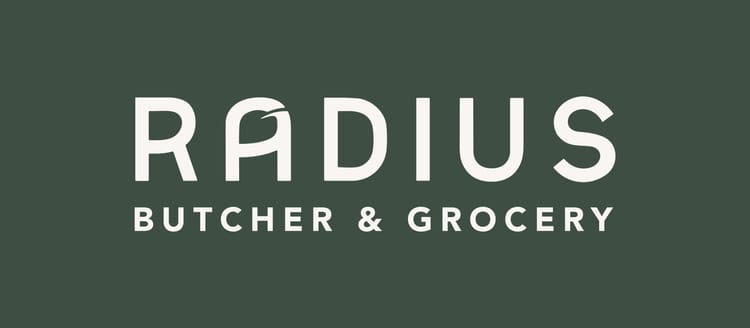The Radius Business Model
A vision is just vapor without a sustainable business model. This post explains our business hypotheses as we work to turn the Radius vision into reality.
Grocery stores are notoriously difficult businesses. Will the Radius business model work?
- Yes because Radius only stocks high margin perishables and requires much less staffing. Non-perishable grocery aisles are zero or negative margin because the products are undifferentiated and must compete on price — Cheerios are Cheerios regardless where you buy them. Conversely, the meat, dairy, and produce areas have 30% - 40% gross margins. Typical grocery stores like Kroger have 1 - 2% net profit, while high-end, perishable-focused stores like Whole Foods or Sprout’s are 2 - 4%.
- Basic math for one location:
- Median per person meal cost $15, average $20 (expensive cuts raise the avg)
- $50 average per meal (2.6 people in the avg American family)
- 1,000 loyal customers that cook 2+ meals a week from Radius
- $5M in annual revenue, $1.5M in gross profit (30% of $5M), $1.25M in non-food costs (labor, rent, utilities, logistics), $250k in net income (5% net profit).
- Many grocery stores are actually real estate development companies in disguise. They use the grocery store as an anchor tenant in a strip mall to attract shoppers, which makes the other retail units more valuable. That’s why you usually see a Safeway or Kroger in a strip mall with many other surrounding stores. They capture the value of their grocery store through the other retail units’ rents rather than the food they sell. Grocery stores, cafes, restaurants, even schools contribute so much to their local neighborhoods, but they are all notoriously difficult to run. Our theory is that most of the value of local businesses and organizations get lost as positive externalities that increase the value of surrounding real estate. Can Radius modify the grocery store real estate development strategy to apply it to urban buildings instead of suburban strip malls? Radius could be the ground floor anchor tenant for urban mixed-use buildings. Instead of exuding positive externalities to the surrounding real estate, capture some of it by managing the building.
Why market Radius as a butcher first and grocery second?
- Better market positioning as a butcher with less direct competition. In Austin there are small grocers (Tiny Grocery, Foxtrot) and large grocers (Central Market, Whole Foods, HEB, Sprouts). There is no pure butcher (Salt & Time, Lee’s, Dai Due all serve meals too). A butcher and grocery optimized for home cooked seasonal meals will be unique in Austin.
- More narrow shopper expectations. When someone shops at a butcher, they expect great meat. When someone shops at a grocery, they expect meat, produce, dry goods, bulk supplies, candy, drinks, and more. Positioning Radius as a butcher makes it more possible to exceed expectations with great produce, dairy, eggs, wine, and grains too.
Staff of ~15 employees
- 1 GM / Head Butcher
- 5 Butchers
- 1 Production Manager
- 1 Floor Manager
- 1 Category Manager
- 5 Full-Time associates
- 2 Part-Time associates
- Part-time bookkeeper

